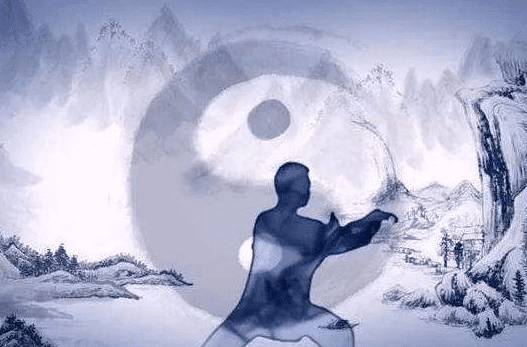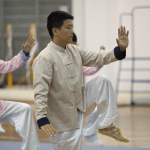
Where does qigong come from?
- Qigong is a method and theory of self-body and mind exercise.
- It was developed by ancient Chinese people during their lives and work.
- Qigong arose from the fight against diseases and aging.
- The essence of qigong is to cultivate true energy, nurture vital energy, and strengthen righteous energy.
- Qigong is believed to support righteousness, dispel evil, and enhance the body’s immune system and resistance.
What is Qigong?
- The definition of qigong serves as the cornerstone for constructing the theory of qigong principles.
- Based on understanding the laws and mechanisms governing qigong practice, there’s a need to reexamine existing definitions of qigong.
- The existing definition of qigong may not accurately and scientifically elucidate its essence.
- This chapter aims to expound the foundational theory of qigong principles.

Limitations in Existing Qigong Definitions
Understanding Movement Skill:
- Movement skill involves mastering specific actions during physical activity.
- It requires coordination between muscle groups guided by the cerebral cortex.
- Precise control of muscle contractions with timing and spatial accuracy characterizes movement skill.
- It primarily encompasses voluntary movement using skeletal muscles.
Comparison with Sports Definitions:
- Definitions of sports and physical activities often focus on describing bodily movements.
- Competitive sports provide detailed descriptions of movement patterns and standards.
- Most sports activities share foundational physiological and psychological principles of body movement.
- Differences among sports involve variations in body control rather than fundamental mechanical changes.
- General sports do not necessitate unique movement principles for each sport.
Challenges in Qigong Definition:
- Existing definitions of qigong lack understanding of its primary mechanisms.
- Definitions often rely on describing exercises, capturing only superficial aspects of qigong.
Existing Analysis of Qigong Definitions
(1) Existing Definitions of Qigong
Modern theories on the “definition of qigong” vary, but they generally focus on the three aspects of adjusting the body, breath, and mind. Here, I’ll choose a typical and representative definition from the textbook “Chinese Medicine Qigong Studies,” edited by Liu Tianjun and Zhang Wenchun: “Qigong is a mind-body exercise skill that combines the three adjustments of body, breath, and mind.”
(2) Shortcomings of Current Qigong Definitions
Inability to Ensure a Unique Correspondence Between Exercise Methods and Effects
Discrepancy Between Exercise Methods and Effects:
- Exercise methods in qigong should correspond to unique exercise effects.
- Existing qigong definitions show a significant discrepancy between methods and effects.
Example: Neidan and Four Dhyanas and Eight Samadhis:
- Both practices fall within traditional qigong definitions.
- Neidan results in a strong perception of qi, while Four Dhyanas and Eight Samadhis yield virtually no perception of qi.
- Despite both practices involving the “three adjustments in one,” they lead to distinct physiological responses.
Key Question:
- Within the same qigong category, two distinct physiological responses are observed.
- It becomes unclear which result should be considered the outcome of qigong practice.
Inconsistency in Definitions:
- Existing qigong definitions do not ensure that defined methods yield consistent effects.
- If one definition leads to two different physiological responses, it is scientifically unreasonable.
The existing definitions of qigong cannot ensure the generation of “qigong-specific physiological effects.”
The reason qigong practice distinguishes itself from other physical activities is that, through its unique exercise methods, the body can experience physiological effects that are distinct from those produced by other forms of exercise. These unique physiological effects that are exclusive to qigong practice are referred to as “qigong-specific physiological effects.”
This raises two questions:
1. What are these “qigong-specific physiological effects”?
2. How can we ensure the generation of “qigong-specific physiological effects” through exercise methods?
Limitations of Existing Definitions:
- Lack of understanding about qigong’s main physiological effects and mechanisms.
- Insufficient research on exercise methods and effects.
- Definitions do not ensure attainment of “qigong-specific physiological effects.”
Qigong-Specific Physiological Effects:
- Refers to the “qigong state,” unique to qigong practice.
- Primary manifestation is the experience of “qi sensation.”
Challenges in Defining the Qigong State:
- Previous understanding lacks precision and objectivity.
- Limited research hinders accurate description of the state.
Imprecision and Unscientific Nature:
- Existing definitions cannot guarantee manifestation of the “qigong state.”
- Exercise methods may not lead to desired physiological effects.
- Consequently, definitions are imprecise and unscientific.
In summary, the main shortcomings of existing qigong definitions can be summarized as follows:
- They fail to ensure a unique correspondence between exercise methods and exercise effects. Exercise methods should lead to specific and consistent exercise effects, but the existing definitions do not guarantee this.
- They are unable to ensure the emergence of qigong-specific physiological effects, commonly known as the “qigong state.”
Supplementing the Shortcomings of the Qigong Definition
A new qigong definition must address the two aforementioned shortcomings to enhance the definition of qigong.
The Key Difference Between Qigong and General Sports – Purely Psychological Operations
Unique Exercise Methods and Effects:
- Qigong’s essence lies in its distinct exercise methods and resulting physiological and psychological effects.
- These unique elements differentiate qigong from general sports.
Identifying Core Distinctions:
- Defining qigong requires distinguishing it from other activities.
- Core distinctions must be identified to articulate the uniqueness of qigong.
Hierarchy of Control:
- Qigong involves control over mental activity, physical movements, and breathing.
- These aspects form a hierarchy in qigong practice.
Key Operation for the “Qigong State”:
- Analyzing which aspect of control is paramount in eliciting the “qigong state.”
- Identifying the core operation crucial for experiencing qigong’s unique effects.
In the specific operational methods of the “three adjustments” in qigong exercise, each element can be performed in two extreme modes during actual practice: adjusting the mind (mental activity) can be done at both a very high and very low level, adjusting the body (physical activity) can be very dynamic or very static, and adjusting the breath (respiration) can be either rapid or steady. Therefore, these three aspects, when combined, can form eight extreme practical exercise methods through permutations and combinations:
a. Adjusting the mind (very high) – Adjusting the body (very static) – Adjusting the breath (steady)
b. Adjusting the mind (very high) – Adjusting the body (very static) – Adjusting the breath (rapid)
c. Adjusting the mind (very high) – Adjusting the body (very dynamic) – Adjusting the breath (steady)
d. Adjusting the mind (very high) – Adjusting the body (very dynamic) – Adjusting the breath (rapid)
e. Adjusting the mind (very low) – Adjusting the body (very static) – Adjusting the breath (steady)
f. Adjusting the mind (very low) – Adjusting the body (very static) – Adjusting the breath (rapid)
g. Adjusting the mind (very low) – Adjusting the body (very dynamic) – Adjusting the breath (steady)
h. Adjusting the mind (very low) – Adjusting the body (very dynamic) – Adjusting the breath (rapid)
Analysis of Exercise Combinations:
- Only combinations “a” and “e” align with qigong practices.
- Other combinations lack the distinctiveness of qigong due to their similarity to general sports activities.
Core Operations in Qigong:
- Adjusting the body and breath are not central to achieving qigong-specific physiological effects.
- Qigong primarily relies on mental activity (adjusting the mind) for attaining its unique effects.
Focus on Mental Activity:
- Qigong can achieve its effects through mental activity alone, even without physical movements.
- Mental activity is the core operation distinguishing qigong from general sports.
Key Distinction:
- The primary difference between qigong and general sports lies in the emphasis on mental activity.
- Qigong’s unique effects, including the “qigong state,” stem from the control of mental activity.
The Choice of “Presence” or “Absence” of Qigong-Specific Physiological Effects
Discrepancy in Exercise Results:
- Existing qigong definitions encompass both combinations “a” and “e,” leading to varied exercise outcomes.
Specific Exercise Methods:
- Combination “a” corresponds to Inner Alchemy (Neidan).
- Combination “e” represents the Four Dhyanas and Eight Concentrations (Sìchán Bādìng).
Physiological Effects:
- Combination “a” enhances “qi sensation” in the body.
- Combination “e” diminishes “qi sensation” and mental thoughts.
Relationship between “Qi Sensation” and Exercise Methods:
Qi Sensation Intensity=𝑓(Exercise Methods)Qi Sensation Intensity=f(Exercise Methods)
Qi Sensation Intensity (Effect) = Mental Control Intensity / Physical Activity Intensity (Exercise Method)
Divergent Effects of Inner Alchemy and “Four Dhyanas and Eight Concentrations”:
- Similar Beginnings, Different Outcomes:
- Both methods involve “adjusting the breath, body, and mind.”
- Initially, they may lead to similar “qi sensation” effects.
- Progressive Divergence:
- Inner Alchemy results in increasingly stronger “qi sensation” effects over time.
- “Four Dhyanas and Eight Concentrations” leads to weaker or absent “qi sensation” effects, progressing to the disappearance of mental thoughts.
Reasons for Divergence:
- Detailed Differences in Exercise Methods:
- Shift in control of consciousness and mental thoughts during the transition to the “Second Dhyanas” in “Four Dhyanas and Eight Concentrations.”
- Transition involves moving from observing bodily responses to intentionally abandoning mental perceptions.
Shift in Operation:
- From initial focus on bodily responses to advanced stage aiming to abandon sensory perceptions (the six senses).
Distinct “Qi Sensation” Effects:
- Consistent Movements and Breathing:
- In qigong exercise, maintaining consistent movements and breathing adjustments is crucial.
- Extreme Mental Activity Control:
- Extreme control over mental activity leads to two distinct “qi sensation” effects:
- Strong “qi sensation” effects (Inner Alchemy).
- Weak or absent “qi sensation” effects (Four Dhyanas and Eight Concentrations).
- Extreme control over mental activity leads to two distinct “qi sensation” effects:
- Differential Mechanisms:
- Inner Alchemy: Progressively stronger “qi sensation” effects.
- Four Dhyanas and Eight Concentrations: Suppression of bodily responses to achieve extreme calmness (extinction of physical sensations and mental thoughts).
- Health Implications:
- Both effects may have positive impacts on overall health.
Discussion on Qigong Practice:
- Defining Qigong Practice:
- Essential to rigorously discuss which exercise method constitutes qigong practice.
- Identifying Qigong-Specific Physiological Effect:
- Question of whether the “presence” or “absence” of “qi sensation” should be considered as a qigong-specific physiological effect.
More to read:
What Is Ba Duan Jin? The Most Complete Tutorial For You.
What Should Qigong Beginners Know? Quick Ways To Start
Do You Know How To Meditate? The Easy Way To Do It
How To Learn Qigong? 12 Things Beginners Must Know
What is Qi Gong? How to understand it easily?

